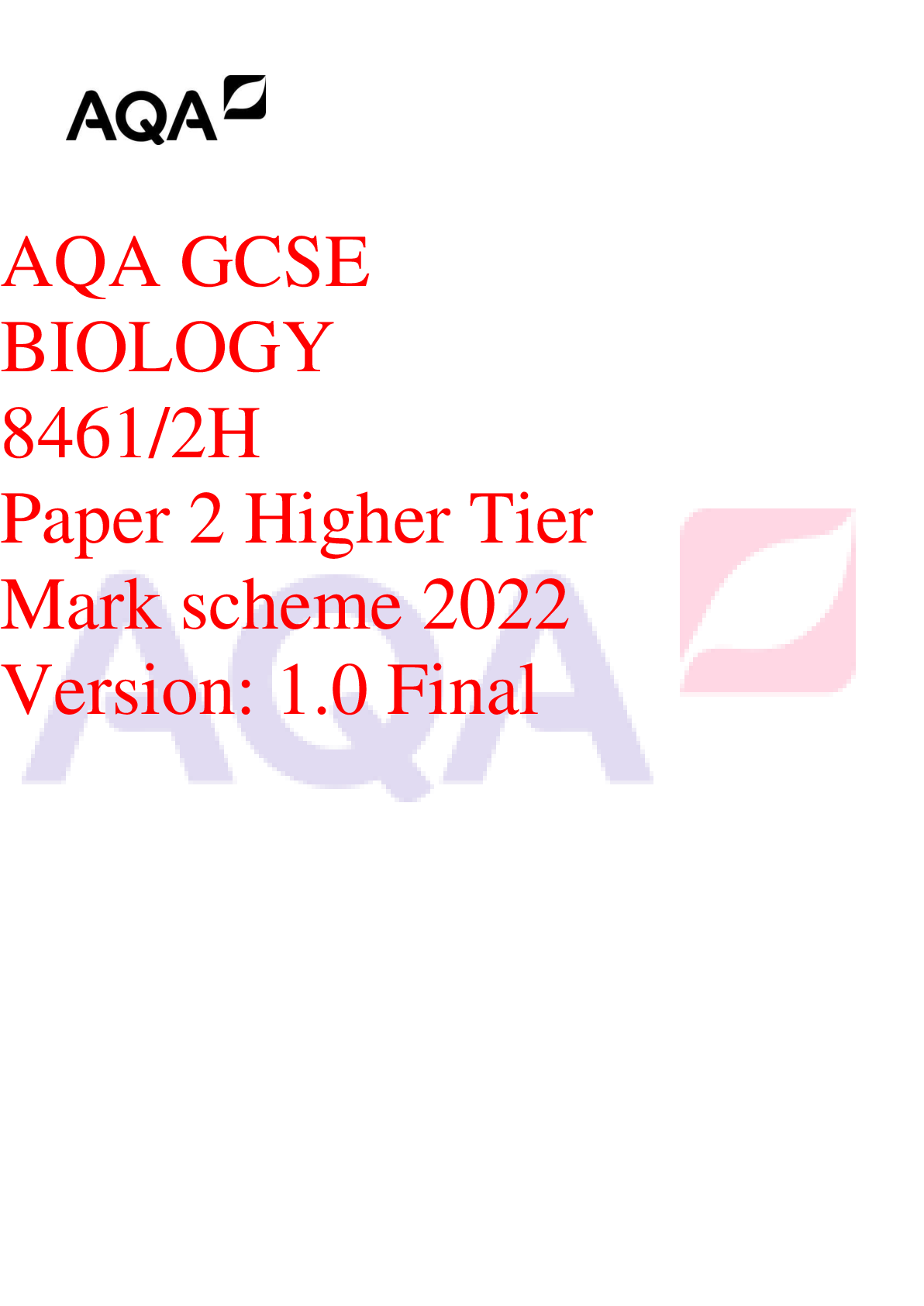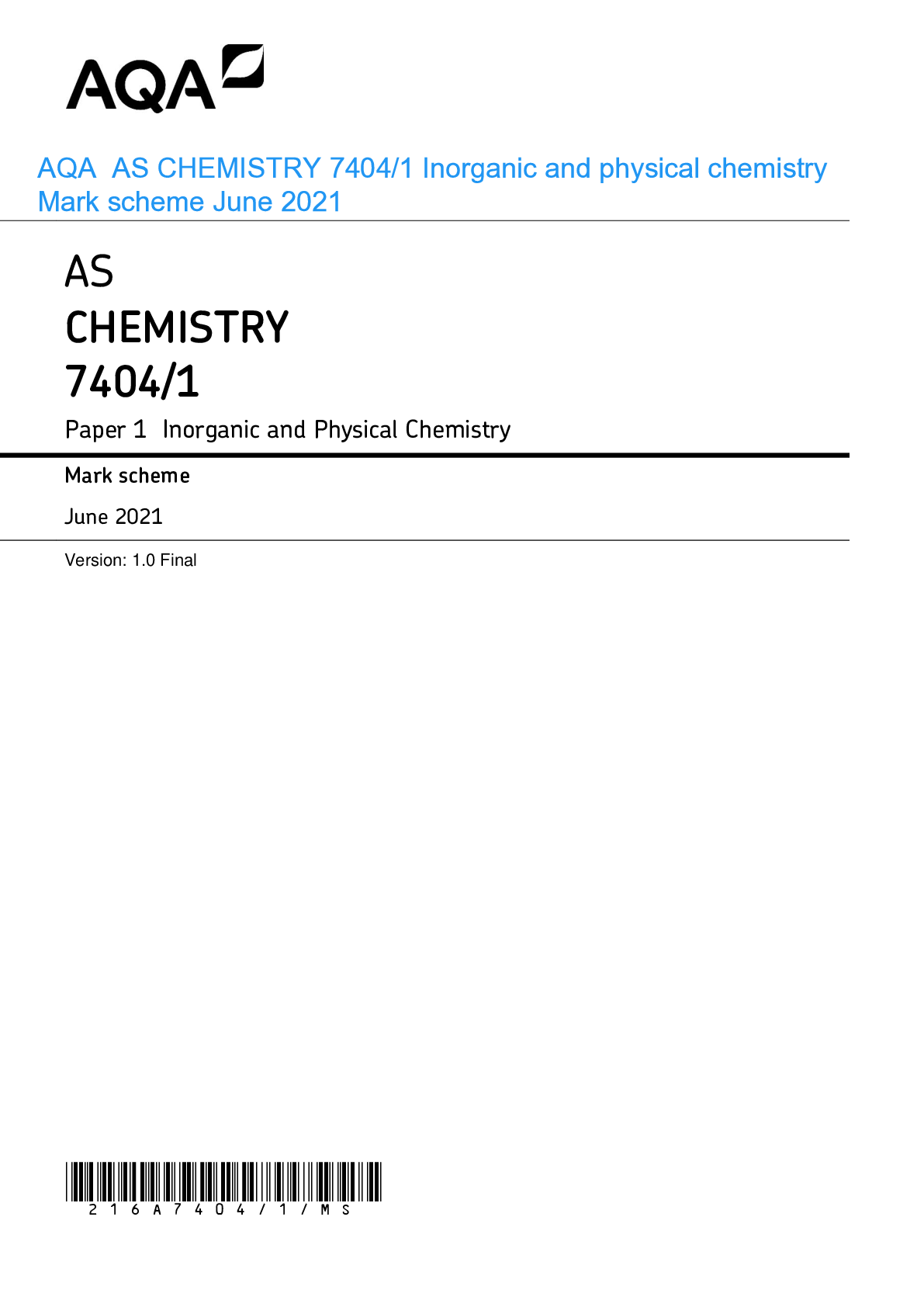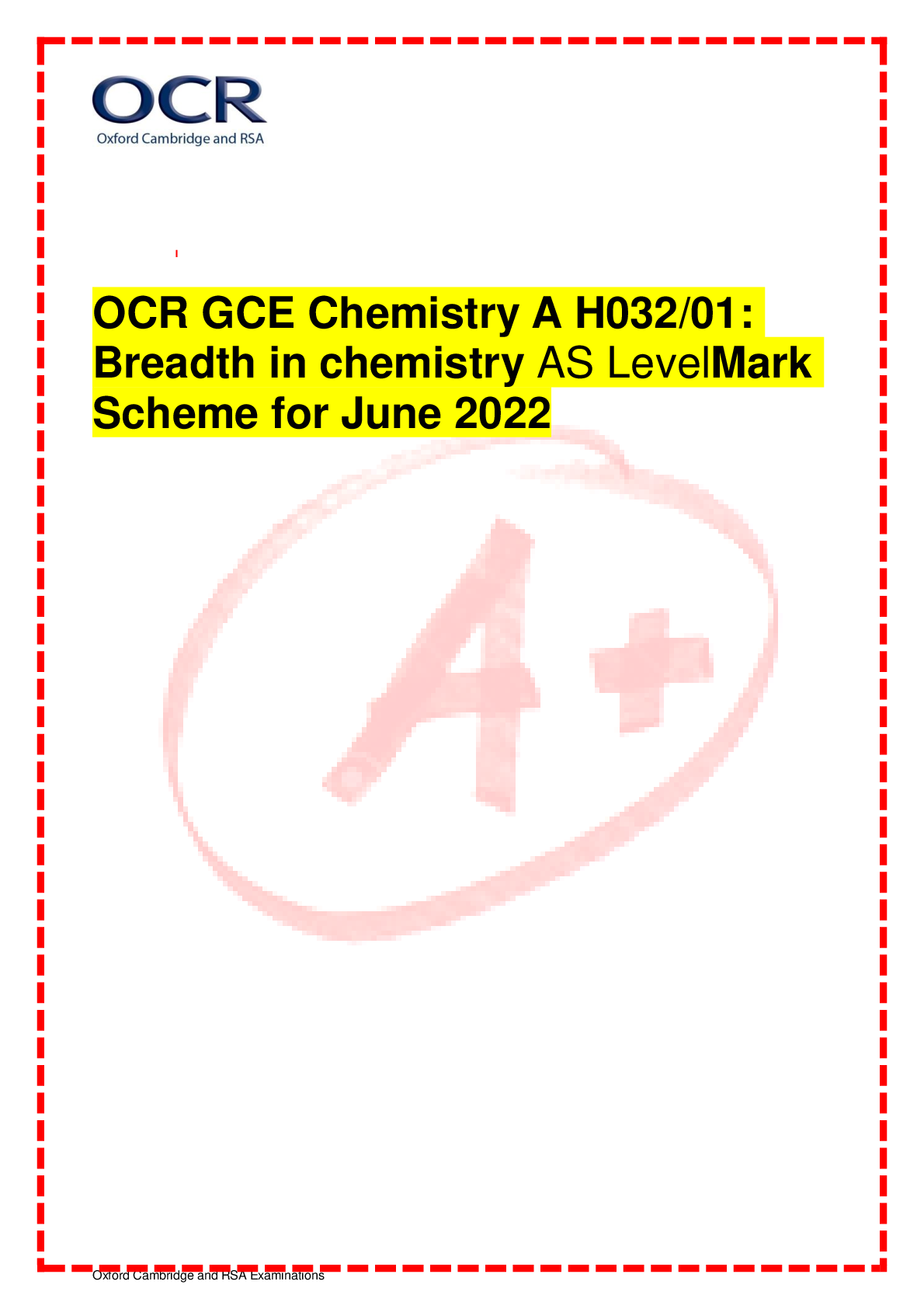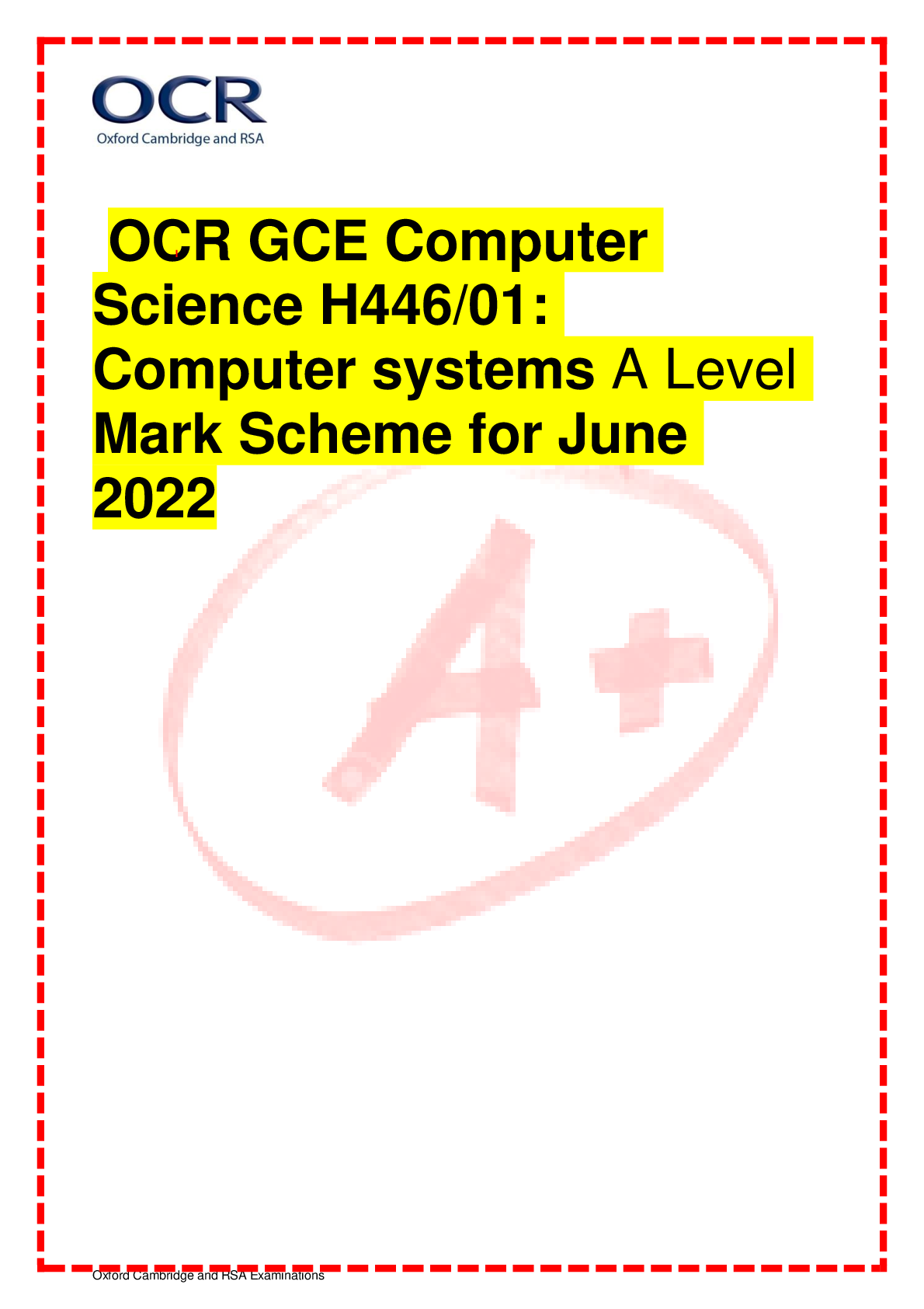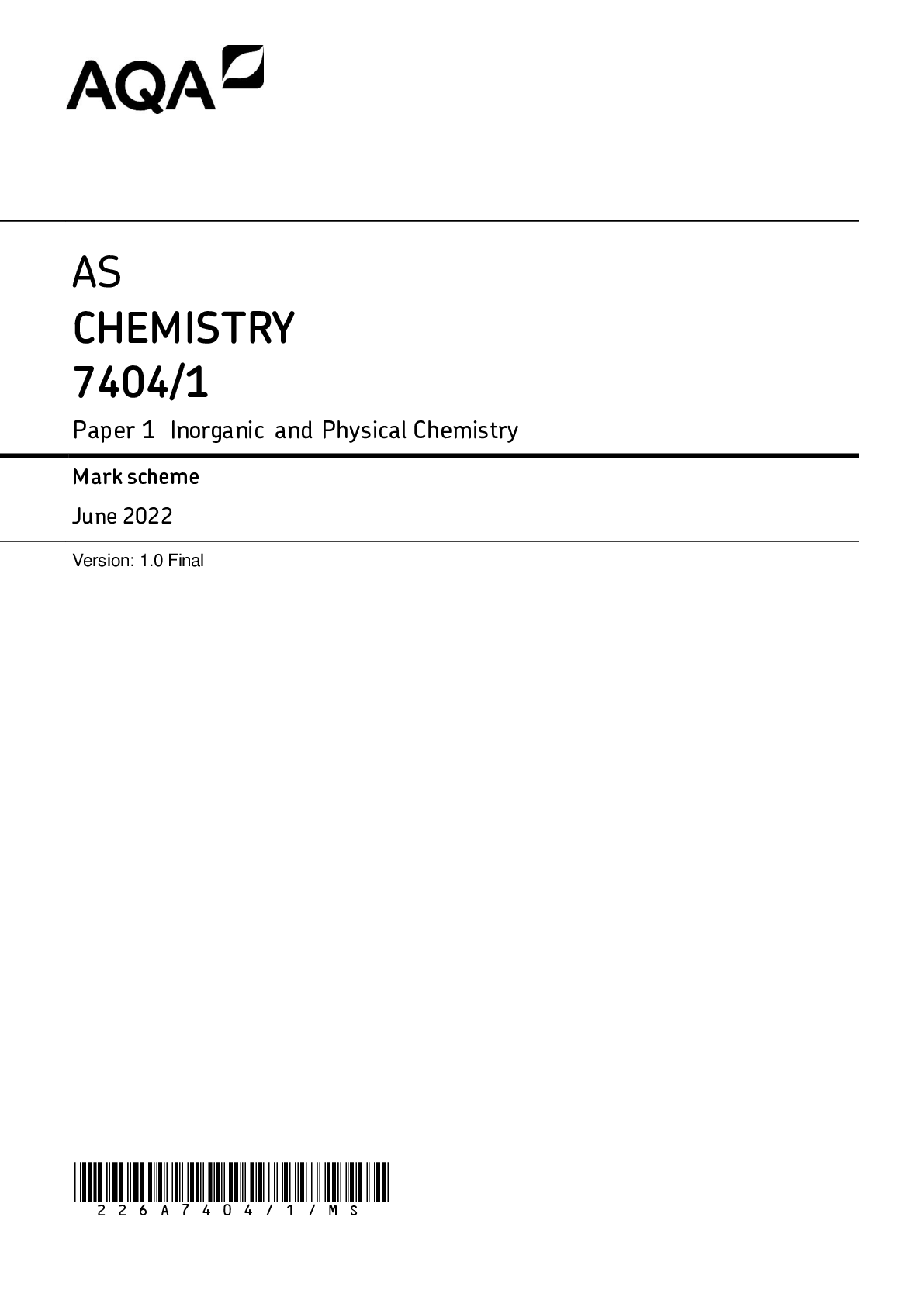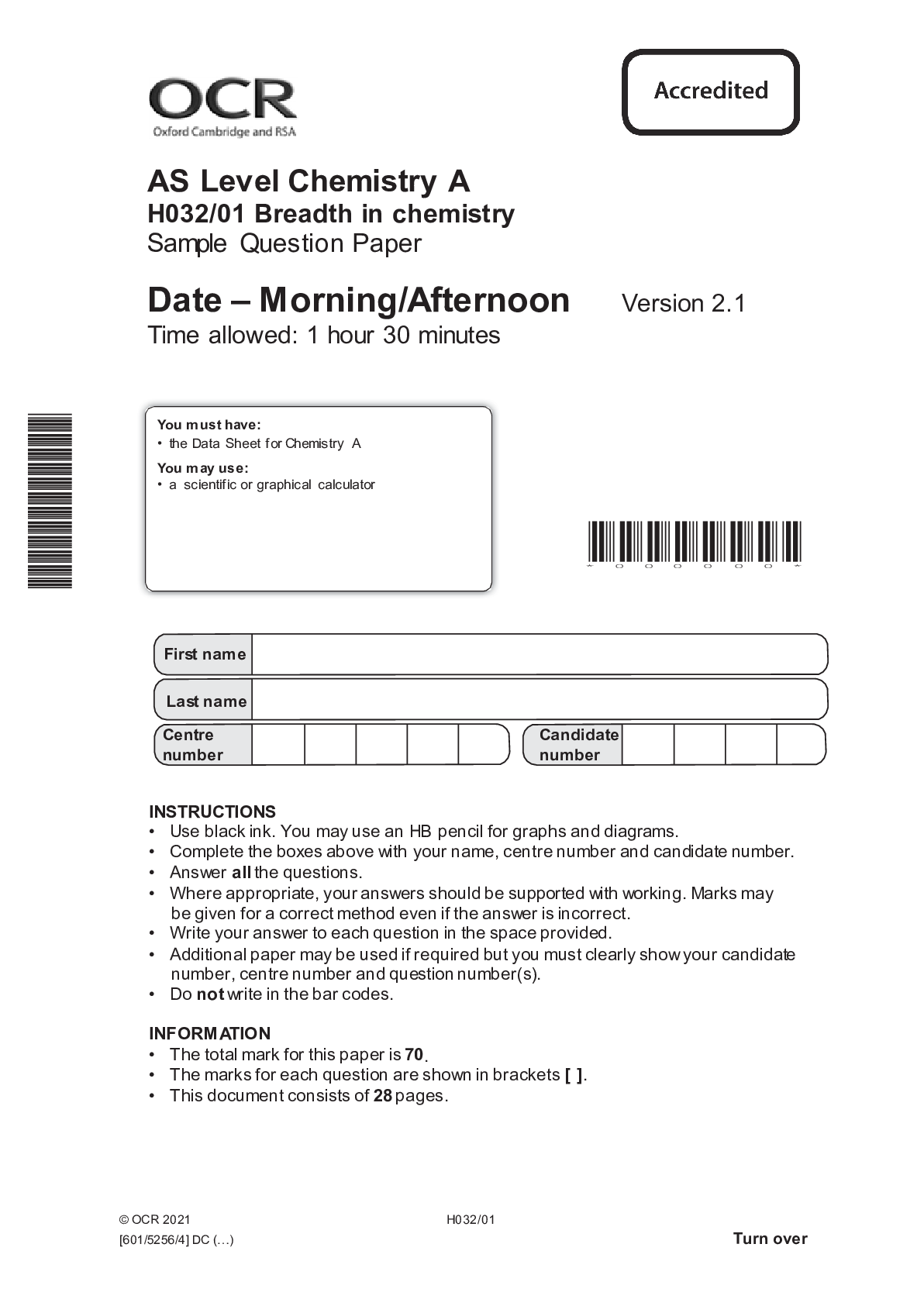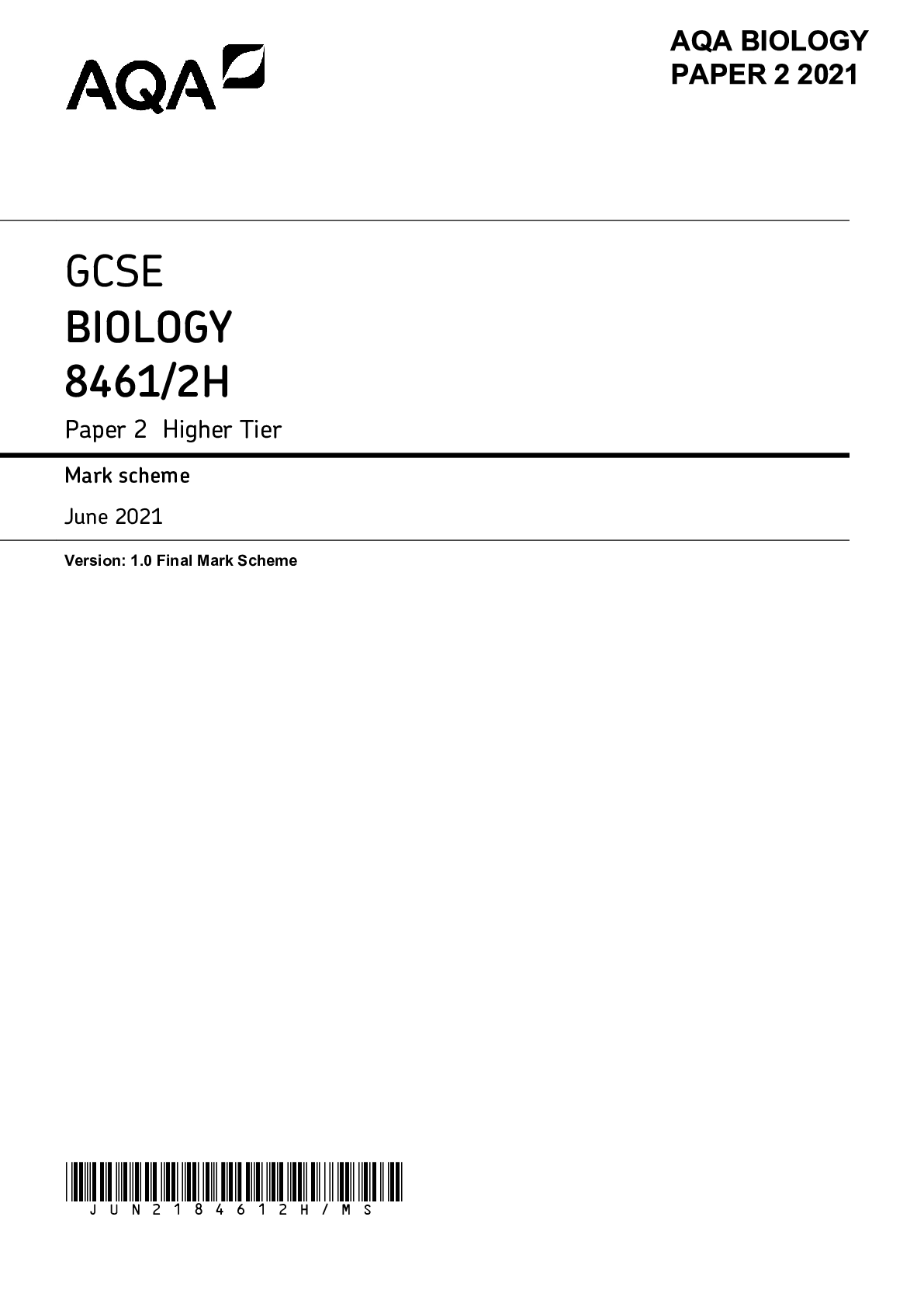Chemistry > AS Mark Scheme > OCR GCE Computer Science H446/02: Algorithms and programming A Level Mark Scheme for June 2022 (All)
OCR GCE Computer Science H446/02: Algorithms and programming A Level Mark Scheme for June 2022
Document Content and Description Below
OCR GCE Computer Science H446/02: Algorithms and programming A Level Mark Scheme for June 2022 GCE Computer Science H446/02: Algorithms and programming A Level Mark Scheme for... June 2022 OCR (Oxford Cambridge and RSA) is a leading UK awarding body, providing a wide range of qualifications to meet the needs of candidates of all ages and abilities. OCR qualifications include AS/A Levels, Diplomas, GCSEs, Cambridge Nationals, Cambridge Technicals, Functional Skills, Key Skills, Entry Level qualifications, NVQs and vocational qualifications in areas such as IT, business, languages, teaching/training, administration and secretarial skills. It is also responsible for developing new specifications to meet national requirements and the needs of students and teachers. OCR is a not-for-profit organisation; any surplus made is invested back into the establishment to help towards the development of qualifications and support, which keep pace with the changing needs of today’s society. This mark scheme is published as an aid to teachers and students, to indicate the requirements of the examination. It shows the basis on which marks were awarded by examiners. It does not indicate the details of the discussions which took place at an examiners’ meeting before marking commenced. All examiners are instructed that alternative correct answers and unexpected approaches in candidates’ scripts must be given marks that fairly reflect the relevant knowledge and skills demonstrated. Mark schemes should be read in conjunction with the published question papers and the report on the examination. © OCR 2022 MARKING INSTRUCTIONS PREPARATION FOR MARKING RM Assessor 1. Make sure that you have accessed and completed the relevant training packages for on-screen marking: RM Assessor Online Training; OCR Essential Guide to Marking. 2. Make sure that you have read and understood the mark scheme and the question paper for this unit. These are posted on the RM Cambridge Assessment Support Portal http://www.rm.com/support/ca 3. Log-in to RM Assessor and mark the required number of practice responses (“scripts”) and the required number of standardisation responses. YOU MUST MARK 5 PRACTICE AND 10 STANDARDISATION RESPONSES BEFORE YOU CAN BE APPROVED TO MARK LIVE SCRIPTS. MARKING 1. Mark strictly to the mark scheme. 2. Marks awarded must relate directly to the marking criteria. 3. The schedule of dates is very important. It is essential that you meet the 50% and 100% deadlines. If you experience problems, you must contact your Team Leader (Supervisor) without delay. 4. If you are in any doubt about applying the mark scheme, consult your Team Leader by telephone, email or via the RM messaging system. 5. Work crossed out: a. where a candidate crosses out an answer and provides an alternative response, the crossed out response is not marked and gains no marks b. if a candidate crosses out an answer to a whole question and makes no second attempt, and if the inclusion of the answer does not cause a rubric infringement, the assessor should attempt to mark the crossed out answer and award marks appropriately. 6. Always check the pages (and additional objects if present) at the end of the response in case any answers have been continued there. If the candidate has continued an answer there then add a tick to confirm that the work has been seen. 7. There is a NR (No Response) option. Award NR (No Response) - if there is nothing written at all in the answer space - OR if there is a comment which does not in any way relate to the question (e.g. ‘can’t do’, ‘don’t know’) - OR if there is a mark (e.g. a dash, a question mark) which isn’t an attempt at the question. Note: Award 0 marks – for an attempt that earns no credit (including copying out the question). 8. The RM comments box is used by your Team Leader to explain the marking of the practice responses. Please refer to these comments when checking your practice responses. Do not use the comments box for any other reason. If you have any questions or comments for your Team Leader, use telephone, email or the RM messaging system. 9. Assistant Examiners will send a brief report on the performance of candidates to their Team Leader (Supervisor) via email by the end of the marking period. The report should contain notes on particular strengths displayed as well as common errors or weaknesses. Constructive criticism of the question paper/mark scheme is also appreciated. 10. For answers marked by levels of response: a. To determine the level – start at the highest level and work down until you reach the level that matches the answer b. To determine the mark within the level, consider the following: Descriptor Award mark On the borderline of this level and the one below At bottom of level Just enough achievement on balance for this level Above bottom and either below middle or at middle of level (depending on number of marks available) Meets the criteria but with some slight inconsistency Above middle and either below top of level or at middle of level (depending on number of marks available) Consistently meets the criteria for this level At top of level 11. Annotations Annotation Meaning Omission mark Benefit of the doubt Incorrect point Follow through Not answered question No benefit of doubt given Repeat Correct point Too vague Zero (big) Blank Page – this annotation must be used on all blank pages within an answer booklet (structured or unstructured) and on each page of an additional object where there is no candidate response. Level 1 Level 2 Level 3 12. Subject-specific Marking Instructions INTRODUCTION Your first task as an Examiner is to become thoroughly familiar with the material on which the examination depends. This material includes: • the specification, especially the assessment objectives • the question paper and its rubrics • the mark scheme. You should ensure that you have copies of these materials. You should ensure also that you are familiar with the administrative procedures related to the marking process. These are set out in the OCR booklet Instructions for Examiners. If you are examining for the first time, please read carefully Appendix 5 Introduction to Script Marking: Notes for New Examiners. Please ask for help or guidance whenever you need it. Your first point of contact is your Team Leader. USING THE MARK SCHEME Please study this Mark Scheme carefully. The Mark Scheme is an integral part of the process that begins with the setting of the question paper and ends with the awarding of grades. Question papers and Mark Schemes are developed in association with each other so that issues of differentiation and positive achievement can be addressed from the very start. This Mark Scheme is a working document; it is not exhaustive; it does not provide ‘correct’ answers. The Mark Scheme can only provide ‘best guesses’ about how the question will work out, and it is subject to revision after we have looked at a wide range of scripts. The Examiners’ Standardisation Meeting will ensure that the Mark Scheme covers the range of candidates’ responses to the questions, and that all Examiners understand and apply the Mark Scheme in the same way. The Mark Scheme will be discussed and amended at the meeting, and administrative procedures will be confirmed. Co-ordination scripts will be issued at the meeting to exemplify aspects of candidates’ responses and achievements; the co-ordination scripts then become part of this Mark Scheme. Before the Standardisation Meeting, you should read and mark in pencil a number of scripts, in order to gain an impression of the range of responses and achievement that may be expected. In your marking, you will encounter valid responses which are not covered by the Mark Scheme: these responses must be credited. You will encounter answers which fall outside the ‘target range’ of Bands for the paper which you are marking. Please mark these answers according to the marking criteria. Please read carefully all the scripts in your allocation and make every effort to look positively for achievement throughout the ability range. Always be prepared to use the full range of marks. LEVELS OF RESPONSE QUESTIONS: The indicative content indicates the expected parameters for candidates’ answers, but be prepared to recognise and credit unexpected approaches where they show relevance. Using ‘best-fit’, decide first which set of BAND DESCRIPTORS best describes the overall quality of the answer. Once the band is located, adjust the mark concentrating on features of the answer which make it stronger or weaker following the guidelines for refinement. • Highest mark: If clear evidence of all the qualities in the band descriptors is shown, the HIGHEST Mark should be awarded. • Lowest mark: If the answer shows the candidate to be borderline (i.e. they have achieved all the qualities of the bands below and show limited evidence of meeting the criteria of the band in question) the LOWEST mark should be awarded. • Middle mark: This mark should be used for candidates who are secure in the band. They are not ‘borderline’ but they have only achieved some of the qualities in the band descriptors. Be prepared to use the full range of marks. Do not reserve (e.g.) high Band 3 marks ‘in case’ something turns up of a quality you have not yet seen. If an answer gives clear evidence of the qualities described in the band descriptors, reward appropriately. AO1 AO2 AO3 High (thorough) Precision in the use of question terminology. Knowledge shown is consistent and well-developed. Clear appreciation of the question from a range of different perspectives making extensive use of acquired knowledge and understanding. Knowledge and understanding shown is consistently applied to context enabling a logical and sustained argument to develop. Examples used enhance rather than detract from response. Concerted effort is made to consider all aspects of a system / problem or weigh up both sides to an argument before forming an overall conclusion. Judgements made are based on appropriate and concise arguments that have been developed in response resulting in them being both supported and realistic. Middle (reasonable) Awareness of the meaning of the terms in the question. Knowledge is sound and effectively demonstrated. Demands of question understood although at times opportunities to make use of acquired knowledge and understanding not always taken. Knowledge and understanding applied to context. Whilst clear evidence that an argument builds and develops through response there are times when opportunities are missed to use an example or relate an aspect of knowledge or understanding to the context provided. There is a reasonable attempt to reach a conclusion considering aspects of a system / problem or weighing up both sides of an argument. However the impact of the conclusion is often lessened by a lack of supported judgements which accompany it. This inability to build on and develop lines of argument as developed in the response can detract from the overall quality of the response. Low (basic) Confusion and inability to deconstruct terminology as used in the question. Knowledge partial and superficial. Focus on question narrow and often one-dimensional. Inability to apply knowledge and understanding in any sustained way to context resulting in tenuous and unsupported statements being made. Examples if used are for the most part irrelevant and unsubstantiated. Little or no attempt to prioritise or weigh up factors during course of answer. Conclusion is often dislocated from response and any judgements lack substance due in part to the basic level of argument that has been demonstrated throughout response. [Show More]
Last updated: 1 year ago
Preview 1 out of 27 pages
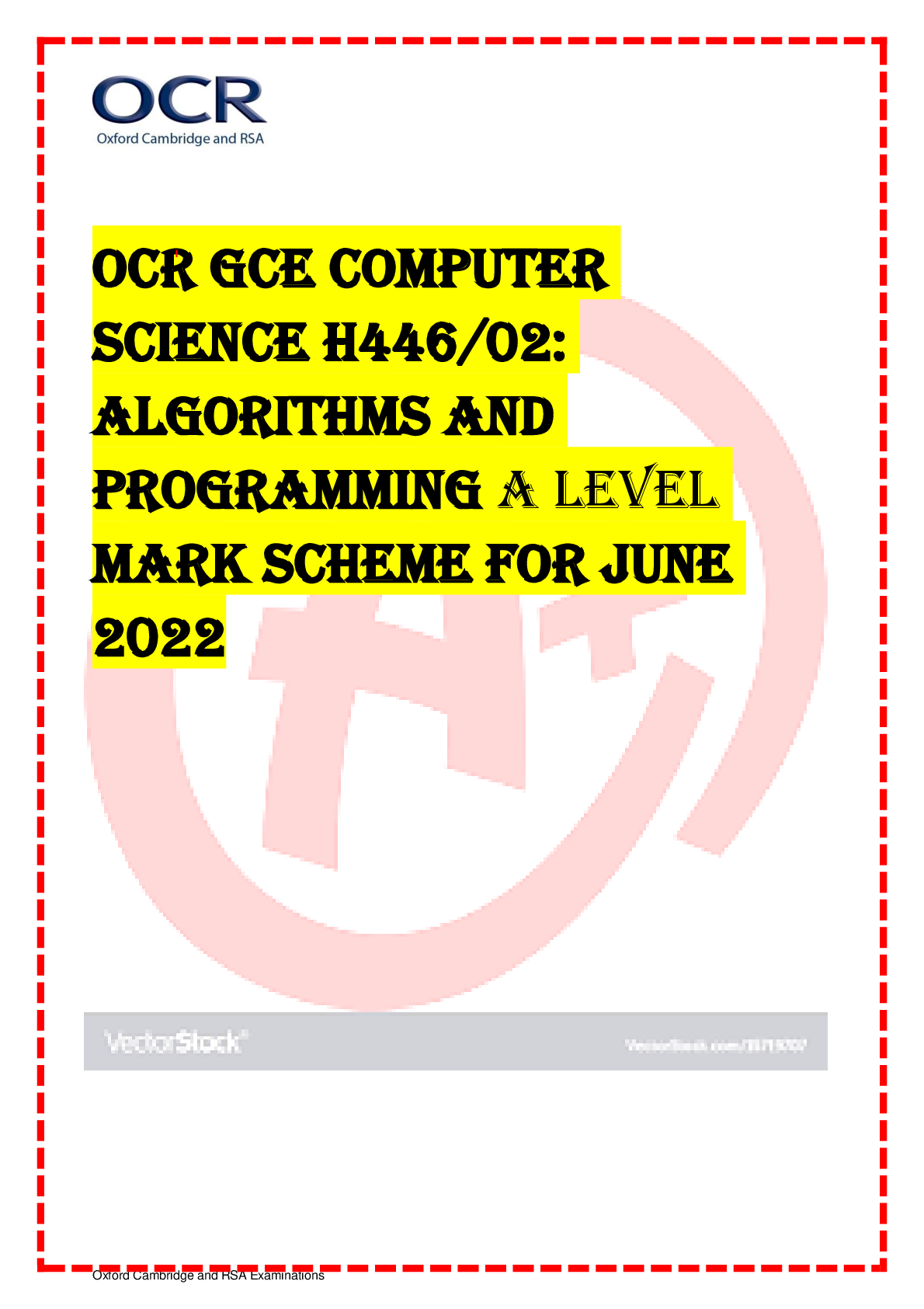
Reviews( 0 )
Document information
Connected school, study & course
About the document
Uploaded On
Jan 10, 2023
Number of pages
27
Written in
Additional information
This document has been written for:
Uploaded
Jan 10, 2023
Downloads
0
Views
64

